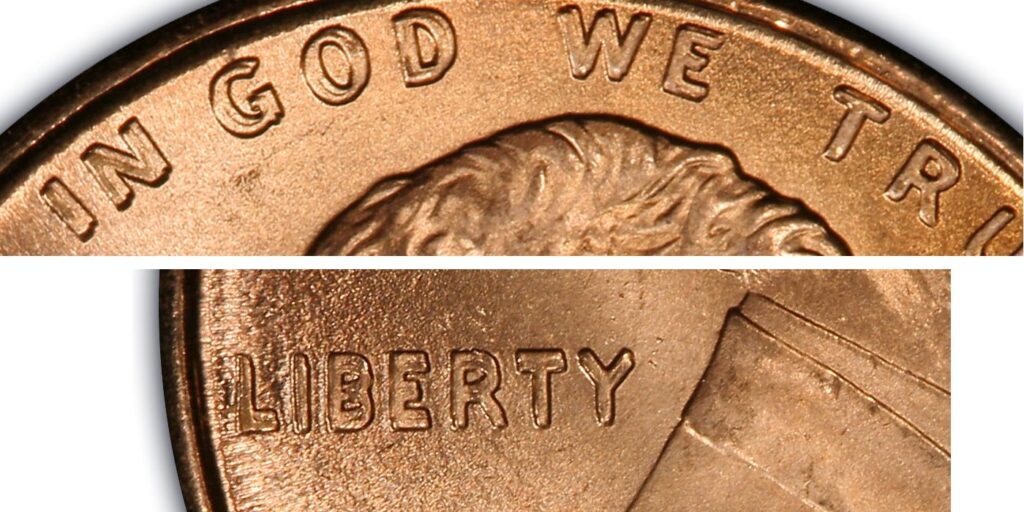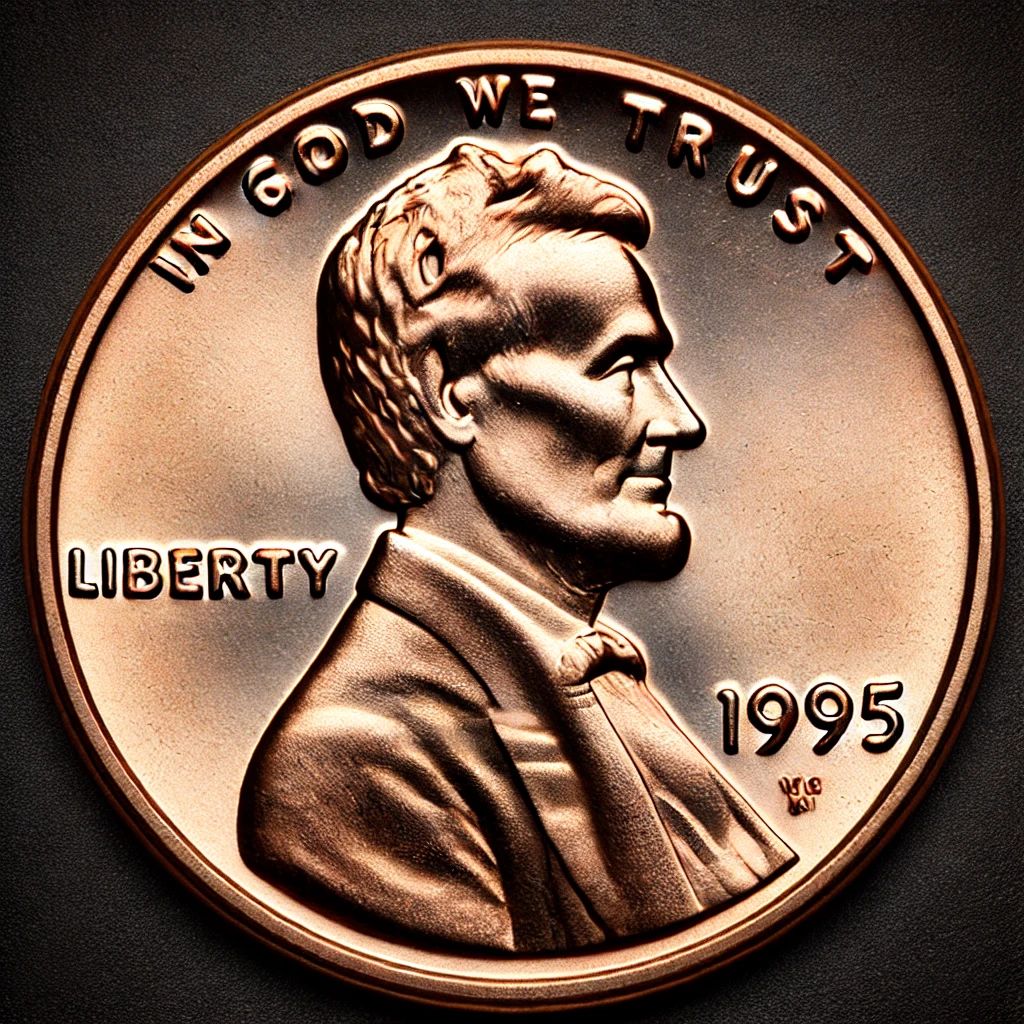The 1995 doubled die penny is one of the most sought-after error coins by collectors. While not as rare as some other doubled die varieties, it is still a valuable piece of numismatic history and an excellent find in pocket change. If you’re curious about the value of a 1995 doubled die penny and how to spot one, you’re in the right place. In this guide, we’ll take an in-depth look at both the 1995 doubled die penny and its Denver counterpart, the 1995-D doubled die penny, to help you better understand their values, characteristics, and what makes them special.
What is a Doubled Die Penny?
A doubled die penny results from a minting error where the design of the coin appears doubled. This error occurs during the die-making process, where the die (used to strike the design onto a blank coin) receives an extra impression. The most prominent feature of a doubled die penny is the appearance of doubled images, especially in the coin’s lettering or design elements.
In the case of the 1995 doubled die penny, the doubling is most noticeable in the inscriptions on the obverse (front) of the coin, particularly in the words “LIBERTY” and “IN GOD WE TRUST.”
Want to Learn more about the Valuable Doubled Die Error? This is where you want to click!
1995 Doubled Die Penny Overview
The 1995 doubled die penny was discovered relatively early after its release and quickly became popular among collectors. Unlike some rarer doubled die errors, like the 1955 doubled die penny, the 1995 version is more abundant but still holds significant value.
Key Characteristics of the 1995 Doubled Die Penny:
- Year: 1995
- Mint Mark: No mint mark (Philadelphia Mint)
- Doubling Location: Obverse (front) of the coin
- Doubling Noticeable In: “LIBERTY” and “IN GOD WE TRUST”
- Doubling Type: Class V (pivoted hub doubling) – the doubling is slightly rotated due to the pivoting motion of the hub during its second impression.
- Coin Composition: 97.5% zinc, 2.5% copper plating (standard composition for pennies minted after 1982)
How to Identify a 1995 Doubled Die Penny
The 1995 doubled die penny can be identified by the distinct doubling of the letters in “LIBERTY” and “IN GOD WE TRUST.” Here are some tips to help you spot one:
- Look for Doubling in “LIBERTY”: The most noticeable feature is the doubling in the letters “LIBERTY.” You’ll see a clear separation of the letters, particularly in the “B,” “E,” and “R.”
- Check “IN GOD WE TRUST”: The words “IN GOD WE TRUST” also show clear signs of doubling, especially in the word “GOD.” The “G” and “O” are where the doubling is most apparent.
- Use Magnification: While some doubling may be visible to the naked eye, using a magnifying glass (at least 10x magnification) will make it easier to spot the doubling, especially if you’re unfamiliar with the appearance of a doubled die error.
1995-D Doubled Die Penny Overview
The Denver Mint (marked by a “D” mint mark) also produced pennies in 1995, but the 1995-D doubled die penny is much rarer and harder to find than its Philadelphia counterpart. However, it’s important to note that the doubling on the 1995-D penny is less dramatic and often harder to detect, making it less popular among collectors.
Key Characteristics of the 1995-D Doubled Die Penny:
- Year: 1995
- Mint Mark: “D” (Denver Mint)
- Doubling Location: Obverse (front) of the coin
- Doubling Noticeable In: Subtle in “LIBERTY” and “IN GOD WE TRUST”
- Rarity: Much rarer than the 1995 doubled die from the Philadelphia Mint
- Coin Composition: 97.5% zinc, 2.5% copper plating

How to Identify a 1995-D Doubled Die Penny
While the doubling on the 1995-D penny is present, it is less pronounced and more difficult to spot than on the 1995 Philadelphia coin. Here’s what to look for:
- Use High Magnification: The doubling on the 1995-D penny is subtle, so a strong magnifying tool (at least 20x magnification) is recommended for identification.
- Focus on “LIBERTY”: Look closely at the word “LIBERTY” for minor doubling in the letters, especially in the “B” and “E.”
- Examine “IN GOD WE TRUST”: Although faint, some doubling may also appear in “IN GOD WE TRUST,” primarily in the letters “O” and “D.”
What Is the Value of a 1995 Doubled Die Penny?
The value of a 1995 doubled die penny depends on its condition (grade), rarity, and demand among collectors. Because it is a relatively common error coin compared to other doubled dies, prices can vary widely. Below is a breakdown of what you might expect:
1995 Doubled Die Penny Value (Philadelphia Mint):
- Circulated Condition: In circulated condition (coins that have been used and show signs of wear), a 1995 doubled die penny typically sells for between $10 and $50. The higher the grade, the more valuable the coin.
- Uncirculated Condition (MS-60 to MS-65): Uncirculated examples (those that haven’t been in general circulation and still retain their original luster) are more valuable. In MS-60 to MS-63 condition, the value can range from $50 to $100. Higher-grade coins in MS-65 or better can fetch $150 or more.
- Certified Coins: Coins that are certified by a reputable grading service, such as PCGS (Professional Coin Grading Service) or NGC (Numismatic Guaranty Corporation), tend to fetch higher prices. MS-67 examples, for instance, can go for $500 or more, depending on market demand.
1995-D Doubled Die Penny Value (Denver Mint):
Because the 1995-D doubled die penny is rarer but harder to identify, its value tends to be slightly higher than the 1995 Philadelphia version:
- Circulated Condition: In lower grades, these coins are usually valued around $20 to $75, depending on the visibility of the doubling and overall condition.
- Uncirculated Condition: In MS-60 to MS-65 condition, a 1995-D doubled die penny can be worth between $100 and $200. Higher-grade examples can reach $250 to $400, especially when certified by a professional grading service.
How to Sell a 1995 Doubled Die Penny
If you’ve found a 1995 doubled die penny and are looking to sell it, here are a few tips:
- Get Your Coin Graded: Having your coin professionally graded by a service like PCGS or NGC can increase its value and appeal to serious collectors.
- Research Market Prices: Look at recent auction results and online marketplaces like eBay or Heritage Auctions to get a sense of what similar coins are selling for.
- Sell to a Reputable Dealer: If you prefer not to sell online, local coin dealers or numismatic shows are great places to find buyers. Be sure to work with a reputable dealer to get a fair price.
Conclusion
The 1995 doubled die penny remains one of the most intriguing and accessible error coins for collectors. Whether you find one in pocket change or purchase a high-grade example for your collection, this coin offers both historical significance and potential value. The 1995-D doubled die penny, while harder to find, can also be a valuable addition to any collection.
Do you own a 1995 doubled die penny? Share your story or upload a picture of your find, and help fellow collectors spot this exciting error coin!
